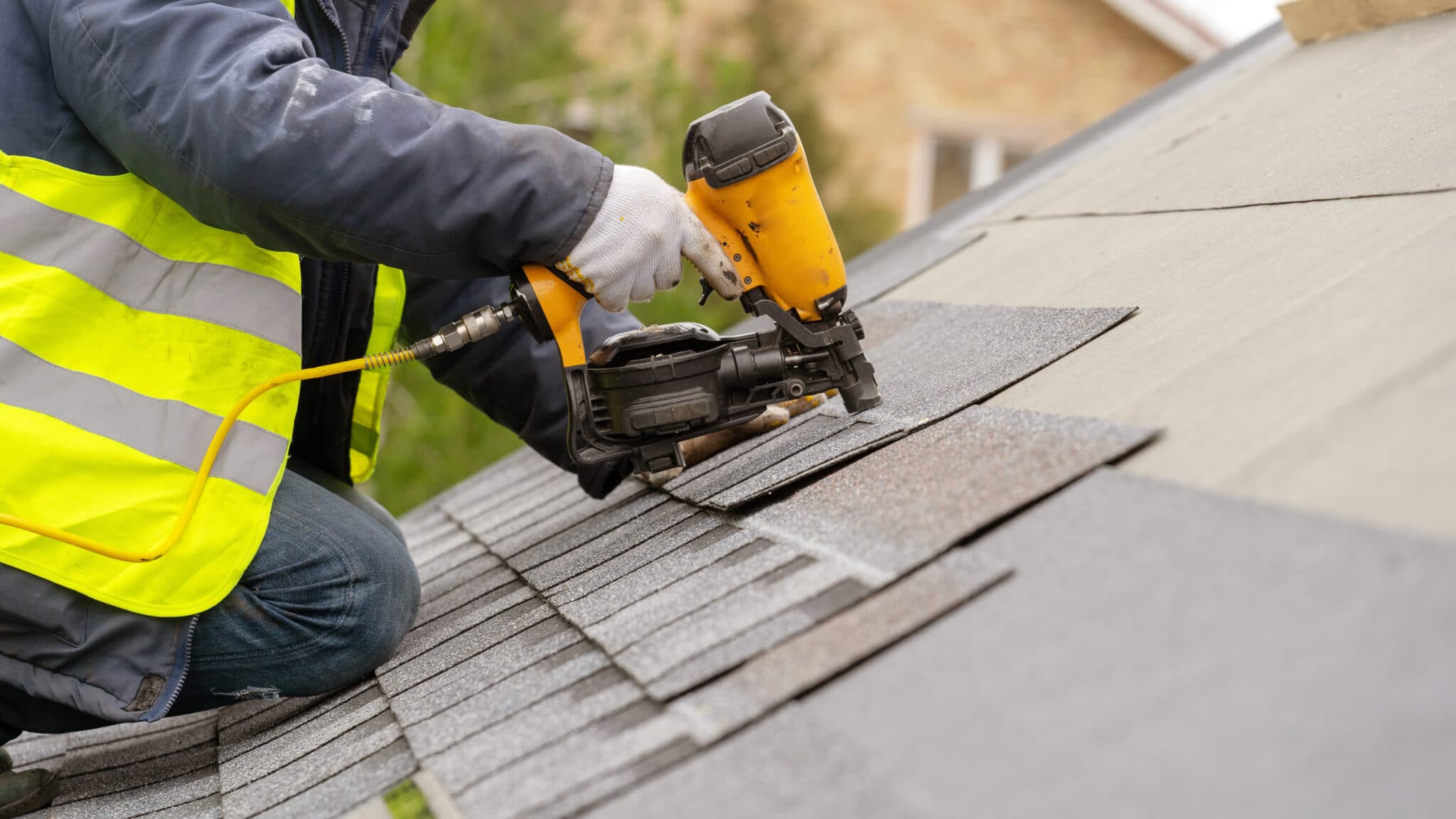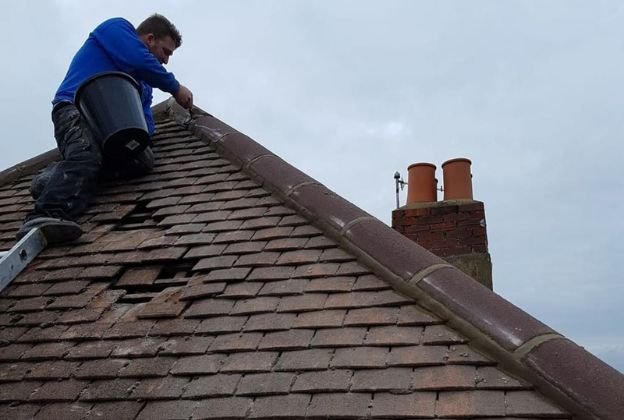Roofers Oahu: Competent Service Providers for Roof Installations and Repairs
Roofers Oahu: Competent Service Providers for Roof Installations and Repairs
Blog Article
Understanding the Various Kinds Of Roof Coverings: A Comprehensive Guide for Homeowners
With a variety of options-- ranging from the traditional gable to the contemporary flat-- each kind offers distinct advantages and difficulties that must align with the house owner's environmental considerations and certain needs. As we explore the complexities of numerous roof covering kinds, it comes to be obvious that one size does not fit all; the ideal selection might surprise you.
Saddleback Roof
Gable roof coverings, defined by their triangular shape, are amongst one of the most popular roof styles as a result of their simplicity and efficiency in losing water and snow. This layout includes two sloping sides that satisfy at a ridge, permitting for efficient drain and decreasing the danger of water build-up. The high pitch generally connected with gable roofs enhances their ability to manage hefty precipitation, making them suitable for different environments.
Along with their useful advantages, gable roofings use visual flexibility. They can be adapted to various building styles, from typical to contemporary homes. The design can additionally fit added functions such as dormer home windows, which improve natural light and ventilation in the attic room room.
Additionally, saddleback roofs offer ample space for insulation, adding to power efficiency. Home owners can select from a variety of roof covering materials, consisting of asphalt tiles, steel, and tiles, additionally improving personalization choices.
Despite their advantages, gable roofings might need extra support in locations prone to high winds or hefty snowfall. In general, the saddleback roof remains a favored selection because of its blend of functionality, durability, and visual allure.
Flat Roofs
Flat roofings are often acknowledged for their minimal design and practical applications, especially in industrial and industrial settings (oahu roofing). These roofing systems feature a horizontal or almost straight surface area, which enables easy construction and versatile room application. While they may do not have the visual appeal of pitched roof coverings, flat roofs offer many benefits, particularly in metropolitan environments where maximizing space is critical
One of the primary benefits of flat roofs is their availability. Home owners can make use of the roof space for different objectives, such as roof yards, balconies, or solar panel installations. Additionally, flat roof coverings are usually extra economical to maintain and install compared to their sloped equivalents, as they need fewer materials and labor.
Usual materials made use of for level roofs include built-up roofing (BUR), modified asphalt, and single-ply membrane layers, each offering unique advantages. Generally, level roof coverings serve as a practical and versatile selection for many house owners and organizations alike.
Hip Roofs
Hip roofs are characterized by their sloped sides that converge at the top, forming a ridge. This style stands out from saddleback roofs, as all 4 sides of a hip roof covering incline downwards toward the walls, giving a more steady structure. The angle of the slopes can vary, permitting flexibility in architectural appearances and performance.
One of the primary benefits of hip roofings is their capacity to withstand heavy winds and negative weather condition conditions. The sloped surfaces make it possible for better water drainage, minimizing the threat of leakages and water damage. In addition, hip roofs use boosted attic room area, which can be utilized for storage or perhaps transformed into comfortable locations.
Nonetheless, constructing a hip roof can be a lot more pricey and complex than simpler roof kinds, such as gable roofings. The extra product and roofing oahu labor associated with developing the slopes and guaranteeing proper architectural honesty can bring about higher expenditures. Despite these drawbacks, many house owners prefer hip roof coverings for their resilience, visual appeal, and potential for energy performance.
Mansard Roofings
Mansard roofings, usually identified by their special four-sided layout, feature two slopes on each side, with the reduced incline being steeper than the top. This building style, originating from France in the 17th century, is not only aesthetically attractive yet functional, as it makes the most of the useful space in the upper floors of a building. The steep lower incline permits for more clearance, making it a suitable option for attic rooms or lofts, which can be exchanged living spaces.
Mansard roofing systems are characterized by their adaptability, suiting numerous building designs, from standard to modern-day. They can be created with different products, consisting of asphalt shingles, slate, or steel, giving property owners with a variety of options to suit their spending plans and choices. In addition, the layout enables for the combination of dormer windows, enhancing natural light and ventilation in the top levels.
However, it is important to consider the potential downsides. Mansard roofings may require even more upkeep due to the intricacy of their style, and their high inclines can be testing for snow and rain drainage. Generally, mansard roofings integrate sophistication with practicality, making them a popular selection among property owners seeking distinct architectural attributes.
Dropped Roof Coverings
As home owners progressively seek simpleness and performance in their architectural layouts, dropped roofs have actually become a popular selection. Defined by a single sloping aircraft, a shed roofing system presents a minimal use this link visual that complements various home designs, from modern to rustic.
Among the primary advantages of a shed roofing system is my company its uncomplicated construction, which typically translates to lower labor and material costs. This style permits for efficient water drain, lowering the risk of leaks and water damage. Furthermore, the upright incline offers enough space for skylights, boosting natural light within the interior.
Shed roofing systems additionally use versatility in terms of use. They can be efficiently incorporated into enhancements, garages, or outdoor frameworks like structures and sheds. Furthermore, this roofing system style can fit various roofing materials, consisting of metal, asphalt tiles, or perhaps green roofing systems, straightening with eco-friendly efforts.
Nonetheless, it is important to think about regional environment problems, as heavy snow tons might necessitate adjustments to the roof covering's angle or framework. Generally, shed roof coverings offer a useful and aesthetically pleasing option for homeowners aiming to maximize functionality without endangering style.
Final Thought


Gable roofings, defined by their triangular form, are amongst the most popular roofing styles due to their simplicity and effectiveness in shedding water and snow. oahu roofing. The steep pitch generally linked with gable roof coverings enhances their capability to deal with heavy rainfall, making them suitable for different climates
While they might do not have the aesthetic allure of pitched roofs, flat roofings supply many benefits, especially in city settings where making the most of area is important.

Report this page